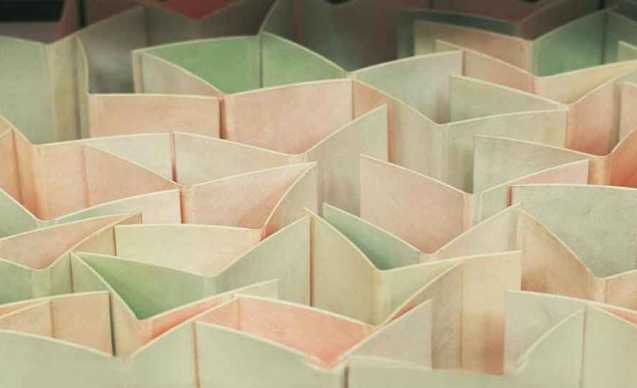Alfredo Pirri
Alfredo Pirri I pesci non portano fucili Macro Testaccio
MACRO is pleased to present the first anthology of Alfredo Pirri, curated by Benedetta Carpi De Resmini and Ludovico Pratesi. The exhibition, set up in the MACRO Testaccio Pavilion B, represents the conclusive moment of the choral project. The fishes do not carry rifles (a journey inside the work, of the artist's thought and research) which was inaugurated in November 2016 with the RWD / FWD exhibition curated by Ilaria Gianni, at the NOMAS Foundation in Rome. The title was chosen by the artist in tribute to the work The Divine Invasion by Philip K. Dick (1981), in which the author imagines an unarmed and fluid society as the open sea in which to immerse oneself and re-emerge giving form to events multiform. The project is proposed as a new possible model of cultural network strongly supported by Pirri, where each institution involved is autonomous but in dialogue with the others.
Over the years, Alfredo Pirri has experimented with many expressive languages, such as painting, sculpture, video and performance. But it is above all his conception of the spatio - temporal relationship, mediated by the work that generates the work, which presents itself to the spectator as a palingenesis: a new vision of reality and of the city. The architectural space is thus transformed into a canvas-support on which Pirri "paints" empty and full, lights and shadows, in a meditated metamorphosis that enhances the conceptual, symbolic and chromatic values.
The exhibition aims to bring together the most important and significant works made by the artist during his career from the 80s to today, emphasizing the rhythmic alternation of fluidity and fixity, where the sudden changes in technique become allegory of a mental time, punctuated from the elements that have always distinguished the artist's research: space, color and light.
Just as the nature of the musical arrangement has a synchronic nature that resides in the instantaneous overlapping of notes, so the exhibition path is configured on the symbolic image of the city, retracing contextually, but not chronologically, the great themes of Pirri's work. Each work presented escapes a philological and diachronic interpretation to create a symposium on the great conceptual map that underlies artistic creation.
The exhibition unfolds through an articulated path, in which the theme of the city, understood not only as an urban area but as an open space, a place of sharing and meeting, is declined in various facets and divided into two main sections. Opens the exhibition the work that the artist has made in the months of research in the laboratory set up at the Nomas Foundation: What advances (2017) continuation of the study on light and color that characterizes the work of Pirri.
Among the selected works: Gas (1990), a work that combines conceptual and minimalist elements, capable already in the title, to evoke an invisible material that crosses and fills the surrounding space; the plastic teams (1987-88), with their immobility of mute witnesses and at the same time their painting that reverberates on the wall as living energy; Verso N (2003), an installation in which the fragments build an imaginary horizon, a spiritual landscape crossed by beams of light that radiate in space, reflecting the colors of painting; Penna's room (1999), consisting of book covers arranged to create an urban skyline, a landscape bathed in a diffused light that recalls the colors of the sunset. The work Passi is a link between the two sections, a site-specific installation that takes on the value of a threshold that opens the vision.
Along with the entire project will be published a catalog published by Quodlibet with unpublished texts by: Benedetta Carpi De Resmini, Maria Vittoria Marini Clarelli, Ilaria Gianni, Ludovico Pratesi, Paola Tognon, Stefano Velotti and a conversation between Hou Hanru and Alfredo Pirri,
BIOGRAPHY:
Alfredo Pirri was born in Cosenza in 1957. He has lived and worked in Rome for many years. His work ranges from painting, sculpture, works on paper and environmental works. His language shows a continuous attention to space, to the surface, to color, creating real environments of light. Each work becomes a spatial, emotional and temporal place, where the observer has the opportunity to enter and immerse himself in chromatic experiences that destabilize and disorient him. One example is his installation site specific Passi, made up of mirrored floors that shatter under the steps of the artist and / or the observer, creating deformed narratives that promote a dialectical dialogue with the surrounding space, its nature and the his story. He collaborates with architects for the realization of multidisciplinary projects, in which art and architecture interact harmoniously. Among his solo shows we mention: Cure, Aperto '88, Venice Biennale, 1988; Gas, Study for the
